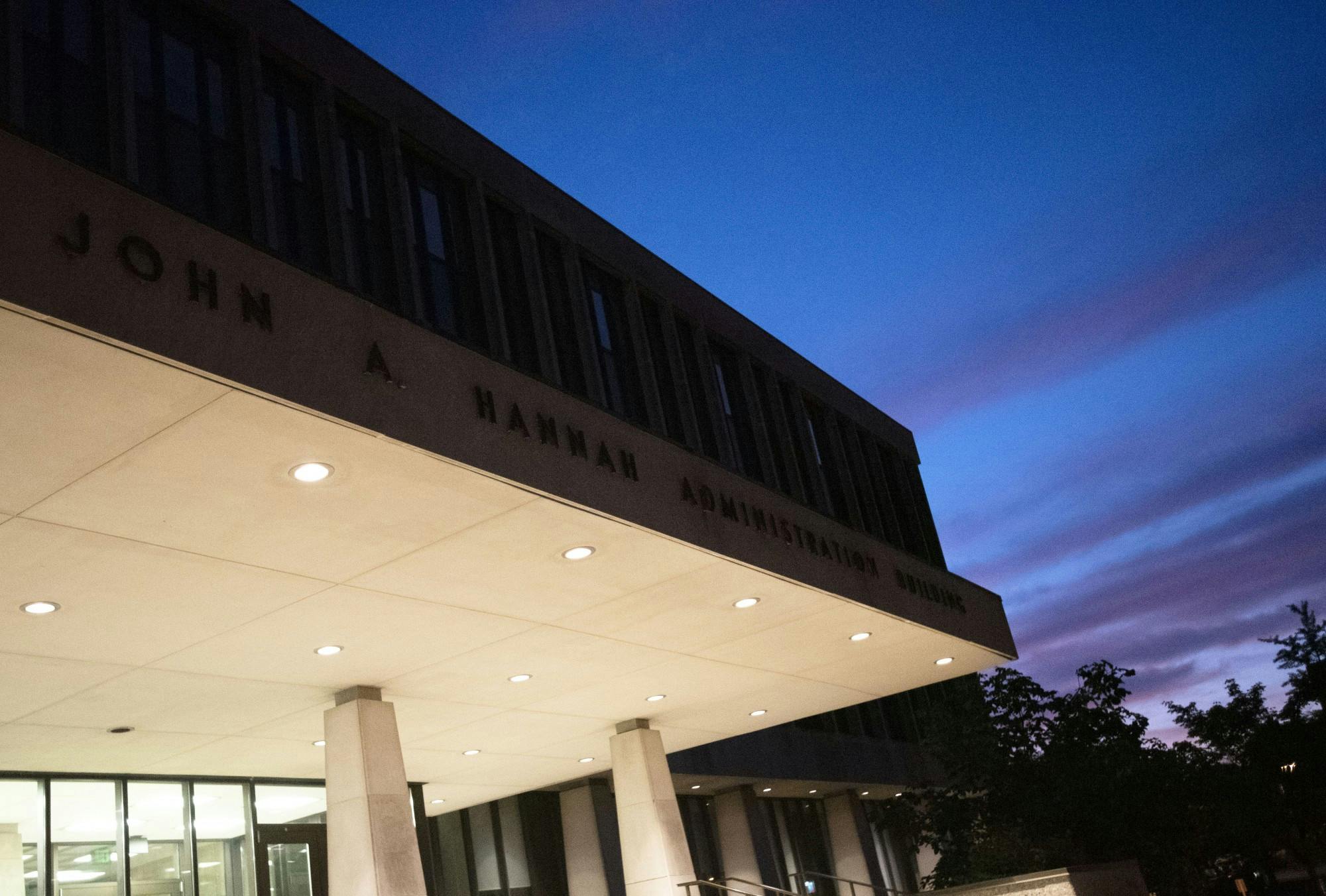Without much speculation, any amount of in-person instruction at Michigan State requires maintaining social distancing practices, an increase in COVID-19 testing, contact tracing and personal protective equipment.
"Our guiding principle for our students and our employees, their families and the community, is their safety," Emily Guerrant, university spokesperson, said.
She repeated an earlier announcement that MSU's Reopening Campus Task Force is exploring a range of scenarios from fully in-person operations to continued remote operations with blended options in between.
Other potential actions include ending the fall semester by Thanksgiving and reducing trips to home communities.
Guerrant said MSU is following state and federal leadership, such as Gov. Gretchen Whitmer's "Stay Home, Stay Safe" and "MI Safe Start" plans as well as the Centers for Disease Control and Prevention, or CDC, in terms of testing and contact tracing advancements.
Such hybrid options have task force leaders asking how the university can replace large classes with smaller classroom groups and if they have to issue masks and hand sanitizer to students, Guerrant said.
"If we decided that we would have no classes over the size of 50 and everyone on campus has to have a mask, then we have to figure out 'well, how would that scheduling work with all the different classes that are offered and the way the curriculum are designed?'" she said. "If we open a normal setting, or even a hybrid setting, we have more people on campus than we do now."
There are currently 1,233 classes for fall 2020 where the enrollment capacity is greater than or equal to 50 students, Guerrant said.
"We're using (the term) enrollment capacity here rather than actual enrollment since not all students for Fall 2020 are enrolled in classes yet," she said.
Another challenge for MSU's potential reopening involves its 27 residence halls.
"You have two people living in a room together and then sharing a bathroom suite with another two people," Guerrant said. "How would we do that and still keep everybody safe?"
She said the task force is planning best and worst case scenarios two or three steps in advance to see how they would accommodate students should they occur.
Similarly, if a COVID-19 vaccine becomes readily available, Guerrant said this would become another scenario they would have to break down.
"This is really a joint effort everywhere and it would continue to be that way at MSU, where we would have to work with local health officials on how we would do (things)," Guerrant said.
There are 53,510 cases of COVID-19 in Michigan, with 28,234 recoveries and 5,129 deaths as of May 21, according to the state's Vital Records.
There are 672 confirmed cases of COVID-19 in Ingham County, with 335 recoveries and 24 deaths as of May 21, according to the county's records. Ingham County Health Department Health Officer Linda Vail said there were 362 people at home in outpatient recovery and three people hospitalized as of May 18.
Michigan Department of Health and Human Services (MDHHS) Public Information Officer Lynn Sutfin said they had a short-term goal of being able to test 15,000 people per day and are now aiming to be able to test 30,000 people per day by June.
Support student media!
Please consider donating to The State News and help fund the future of journalism.
"It is possible there could be an increase in cases as more businesses open and people go back to work, which is why the MI Safe Start Plan has six phases," Sutfin said. "It's also why we continue to urge Michiganders to take the appropriate precautions ... Everyone has a part to play reopening the state’s economy."
U.S. Sen. Gary Peters said in a conference call to discuss proposed medical supply chain legislation, that there is only one domestic manufacturer for the nasal swab tests while the rest are coming from foreign countries, one reason behind a federal shortage in tests.
"As we reopen the economy safely and as we reopen universities and schools safely, we're going to need more PPE, that's going to be a requirement for some time," Peters said.
Guerrant said she expects mixed emotions from the student body regardless of MSU's decision based on current feedback.
"We're getting students who say 'I really want to be able to be back on campus' or maybe freshman saying 'I really want to start my Spartan career out on campus,'" she said. "Then we're getting the other end of the spectrum of people who are like 'please don't bring us back if it's not safe, please don't bring us back if there's a chance that we could be spreading it to each other or taking it back home to our families.'"
Discussion
Share and discuss “What MSU needs if it decides to reopen: testing, PPE, a plan for dorms” on social media.








